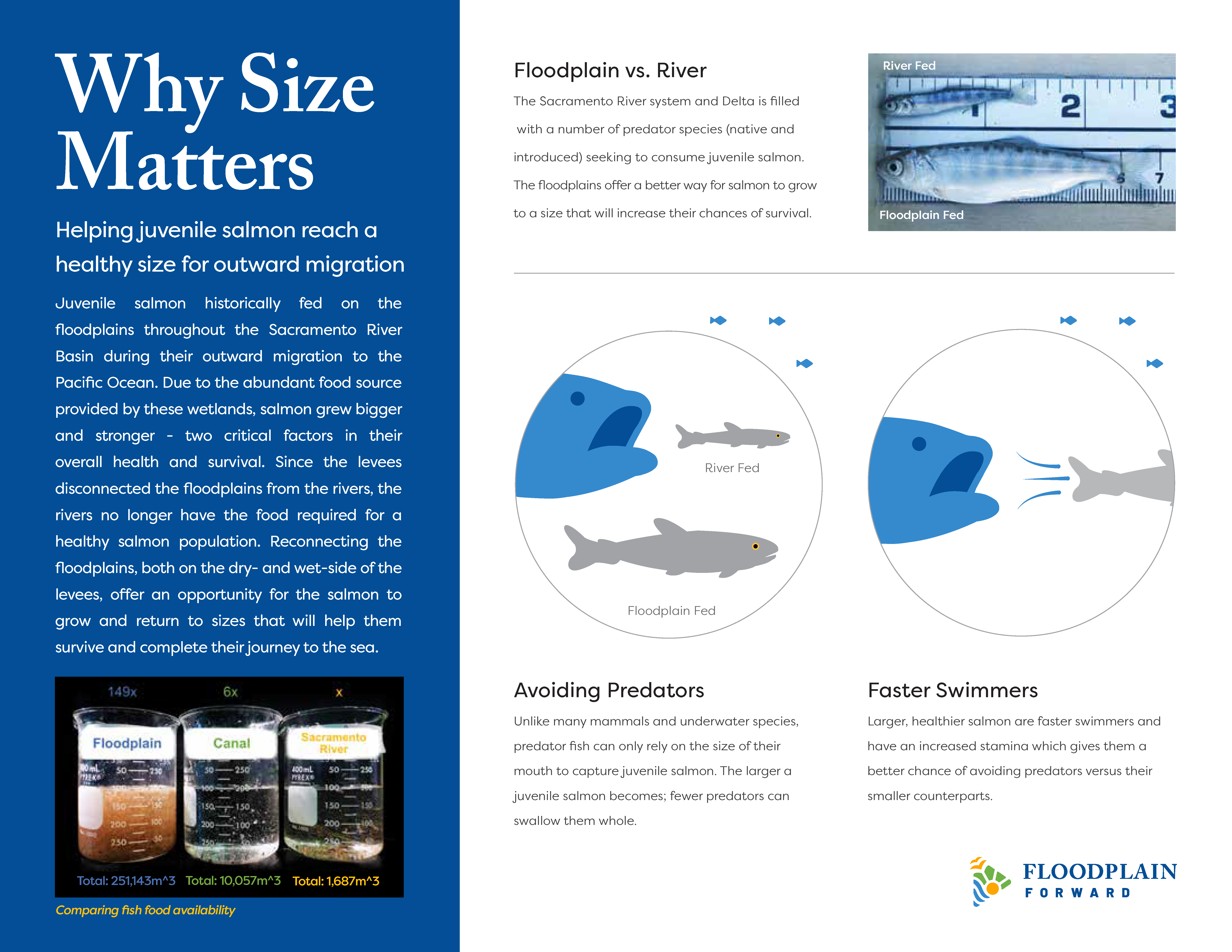By Todd Manley
Central Valley Chinook salmon experience many stressors at each of their life-cycle stages from eggs in the upper river through adulthood. One of the stressors that we know the least about is the role predation plays in the low survival rates of juvenile fish as they migrate downstream and out to the ocean. These losses in the middle reaches of the region’s rivers negate and squander costly water management and restoration actions that are performed with the goal of enhancing salmonid survival in earlier life-cycle stages. To help advance the science and a better understanding of predation, FISHBIO and a coalition of San Joaquin Valley water agencies have conducted a five-year study to better understand and then address predation by non-native species to help protect California’s declining native fish populations. We encourage you to watch this short film–A Startling Picture–that describes the research and the study, which suggests that predation by non-native fish species is having a significant impact on juvenile Chinook salmon, with population-level losses exceeding 50% under ideal conditions, and many salmon not surviving through the rivers to reach the Delta.
This new study calls for additional research to fully quantify the impact of predation and to integrate predation analysis into our management strategies, which will be very helpful. The impacts of predation in the Sacramento River system have been monitored and analyzed in a study by Dylan Stompe that was published in 2020, titled Sacramento River Predator Diet Analysis: A Comparative Study.
One management strategy that can help avoid or minimize predation is the work underway to reactivate our floodplains. In the Sacramento Valley, floodplains offer a better way for salmon to grow to a size that will increase their chances of survival. Juvenile salmon historically sought sanctuary from predator fish and fed on the floodplains throughout the Sacramento River Basin during their outward migration to the Pacific Ocean. Due to the abundant food source provided by these wetlands, salmon grew bigger and stronger–two critical factors in their overall health and survival. The levees that disconnected the floodplains from the rivers also disconnected the fish from access to the food required for a healthy salmon population. Reconnecting the floodplains, both on the dry- and wet-side of the levees, offers an opportunity for the salmon to grow and return to healthy sizes that will help them survive predation zones and complete their journey to the sea. As the document below shows, the floodplains offer a better way for salmon to grow to a size that will increase their chances of survival.
To be sure, our healthy rivers and creeks depend upon many factors for functional ecology, including a sufficient volume of water interacting with a healthy landscape at the right time and place to deliver water for multiple benefits and approximate the habitat patterns to which the native flora and fauna are adapted. A collaboration of fisheries and water management agencies and conservation partners are working together from ridgetop to river mouth in every part of the Sacramento Valley to advance A Holistic Approach for Healthy Rivers and Landscapes in the Sacramento River Basin to “give salmon a chance” by improving freshwater conditions for each life-stage of all four runs of Chinook salmon. A part of this holistic approach is to better understand the various stressors affecting salmon, including the predation of salmon by non-native species in both our rivers and the Bay-Delta, so we can then develop strategies for salmon to avoid predation and increase salmon survival.
This holistic approach includes a portfolio of collaborative actions in every river reach designed to provide flows with function–the sufficient water necessary to reactivate the landscape-scale patterns of biophysical habitat conditions that robust, resilient populations of salmon (and other native fish, bird, and wildlife populations) depend upon. Our goal for this holistic approach is to provide salmon with both a riverscape and landscape they recognize and to provide a better chance to avoid predation and survive through the various stressors. These efforts to avoid and minimize predation are critical to help protect the significant investments that will continue to be made to recover endangered and threatened salmon and steelhead in the Sacramento Valley.
The research on predation being conducted by FishBio is supported by Banta-Carbona Irrigation District, Patterson Irrigation District, San Luis Water District, and West Stanislaus Irrigation District. For further references, we recommend:
- Governor Gavin Newsom’s “California Salmon Strategy for a Hotter, Drier Future: Restoring Aquatic Ecosystems in the Age of Climate Change, which outlines the administration’s broad strategy to recover California’s salmon populations, including the four runs of Chinook salmon that return to rivers and creeks in the Sacramento Valley to spawn.
- NOAA “Species in the Spotlight” and Fisheries Recovery Plan.






Lets keep plenty of water in the river systems post spawn until the young can make it to the ocean. One of the biggest problems I see is low water levels after spawn. This allows the salmon eggs to either dry up or be exposed to predators. Where is common sense?
It,s not rocket science people.